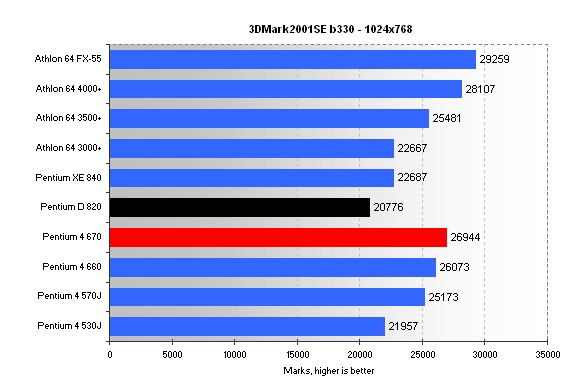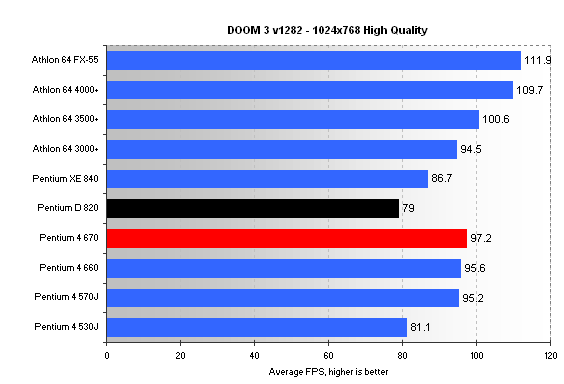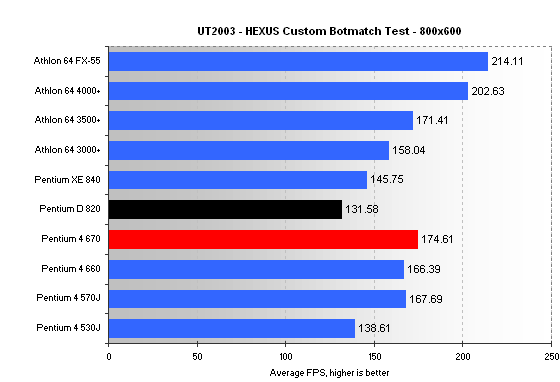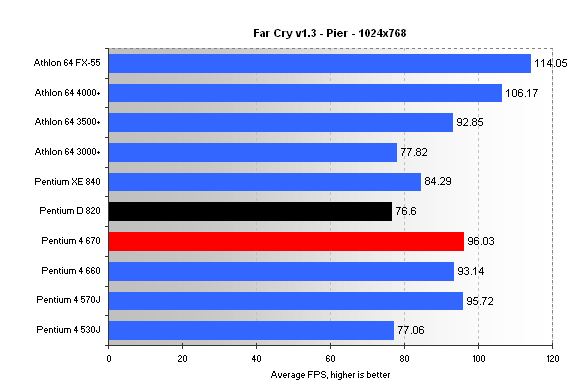Gaming

Gaming is one area where dual-core CPUs become unstuck. As games tend to be single-threaded, you end up having each CPU only being taxed at up to 50%. That's precisely why the Pentium D 820 looks poor in 3DMark2001SE's default test. The '670, though, just inches up Pentium 4's performance to within a thousand marks of an Athlon 64 4000+. The FX-55, though, is comfortably fastest.

DOOM 3 performance generally mirrors that of 3DMark2001SE.

Our UT2003 bot test is more of a system bench than a GPU crusher. It requires huge subsystem. The single-core Pentium 4 670 is barely faster than an Athlon 64 3500+, and the Pentium 4 820 is again the slowest of the bunch.

Lastly, Far Cry, tested with the in-game settings turned up to very high detail. As a rule, equivalent Pentium 4s don't perform as well as Athlon 64s in gaming, and dual-core models' performance is rarely better than a single-core's, although the untapped CPU power comes in handy if you're really into CPU-intensive multitasking.









